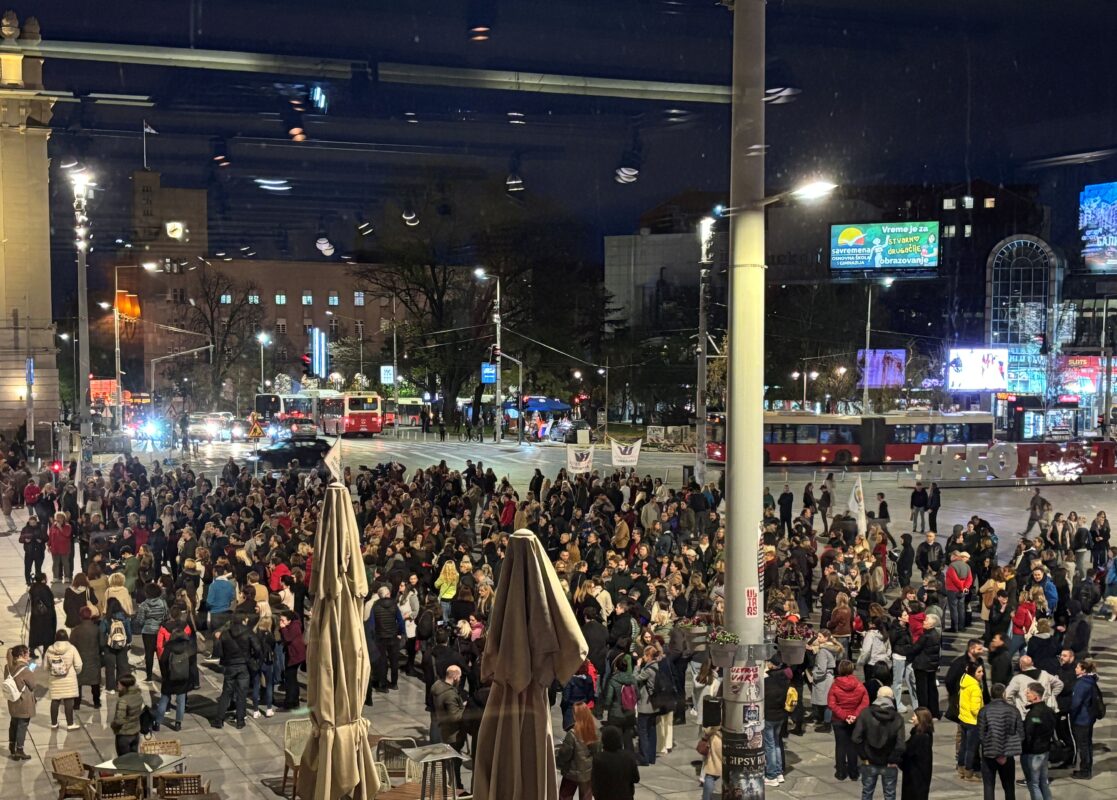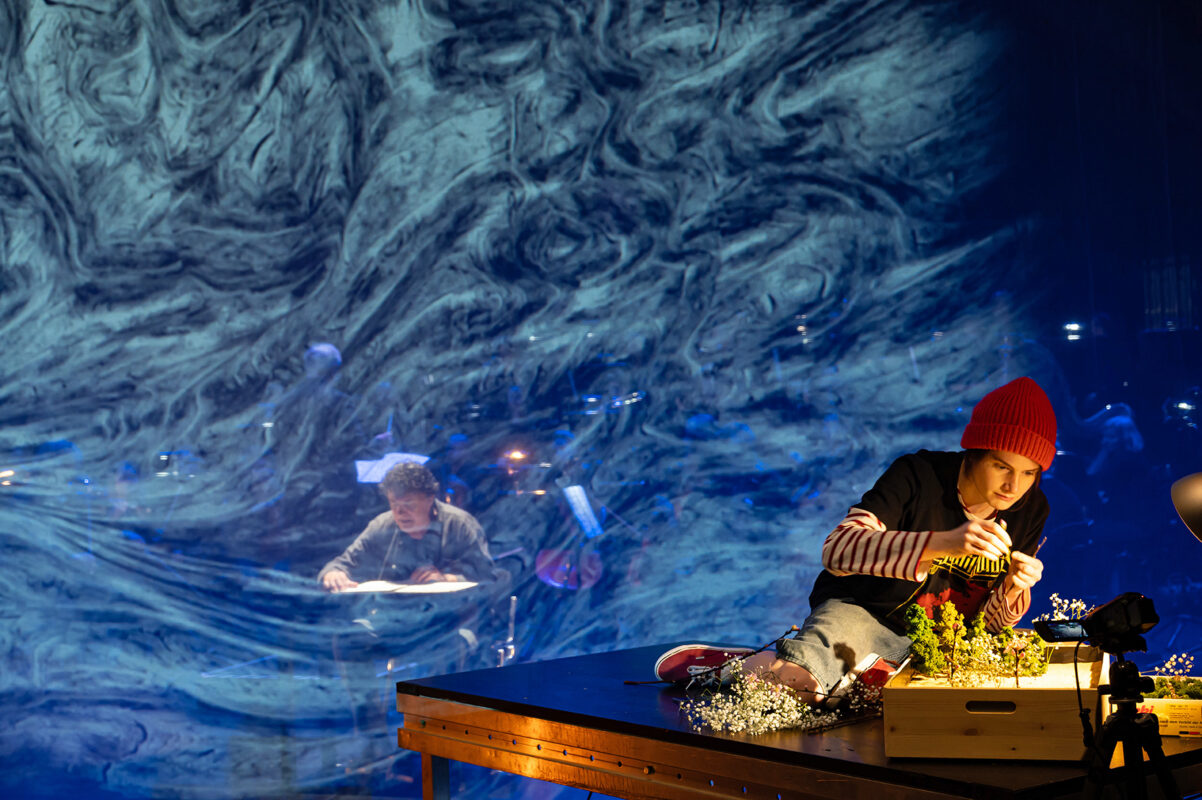Exuberant, visionary and with a video message
Impressions of the 1st Biennale for New Music and Architecture.

With over 1200 participants, the 1st Biennale for New Music and Architecture in Basel involved many young people in particular. Over the extended weekend from September 10 to 13, 6,500 concertgoers and around 14,000 listeners attended the free performances. The 12 projects with around 140 performances took place at 21 different venues and 26 works were premiered. It was a huge logistical challenge for festival director Bernhard Günther and production manager Anja Wernicke to coordinate all the participants and make the various spaces accessible for the artistic idea. The festival program really overflowed, with many exciting events running in parallel.
The young drummers from all over Switzerland kicked off the event, and the weather played along: The quiet Münsterplatz with its noble houses was transformed into a space for a loud drum and whistle concert, accompanied by live electronics. Basel drumming star Ivan Kym and East Tyrolean composer and performer Wolfgang Mitterer had rehearsed their new pieces and actions with the participants of the Swiss-wide drumming week on the Brünig. The performance in Basel was well prepared and the drummers' precision was astonishing. The audience was there - naturally including many parents and siblings of the participants.
The audience then entered the venerable cathedral, which for once provided space for new music. The British composer James Clark (*1957) had conceived a piece especially for Raumklang Basel that divided the 300 singers from five grammar schools into six choirs: in front, behind and to the left and right of the audience. The ensemble of eight trombones, the Trombone Unit Hannover, was spread across the galleries. What was surprising was that the choirs under the direction of Oliver Rudin not only sang, they also shouted and called out in a simple sequence. Wine glasses filled with water were gently swirled, wine bottles were blown into and clapped. This half-hour performance was original, the high Münster filled with vital energy, powerful and poetic sounds, agitations and counter-reactions.
A visionary project was Chronos in the newly renovated Volkshaus. A revolving stage was installed in the middle of the auditorium; the composers Beat Furrer, Thomas Kessler, Beat Gysin and Georg Friedrich Haas explored this special performance situation. On one occasion, the audience sat on the revolving stage and the musicians played in the middle and outside the audience circle. For another piece, the audience moved to the gallery and the music took place on and next to the revolving stage. Michael Simon's lighting direction provided cool white.
Beat Gysin (*1968) was structurally most intensively involved with the rotary movement in the commissioned work Chronos (radial) for ensemble and voices. He made the possibility of "driving around a center" and "turning around oneself" audible and tangible. With increasing tonal complexity and intensifying dramaturgy, he cast a spell over the audience on the revolving stage, and a kind of round dance unfolded. The Ensemble Recherche and the two singers Svea Schildknecht and Johanna Greulich almost fell into a trance.
The Swiss Grand Prix Music award ceremony took place as part of the premiere of this special Drehklang project. In a festive ceremony, Federal Councillor Alain Berset presented the CHF 100,000 prize to Heinz Holliger, who was streamed live from his tour of Japan.








